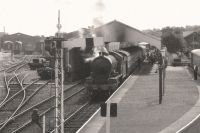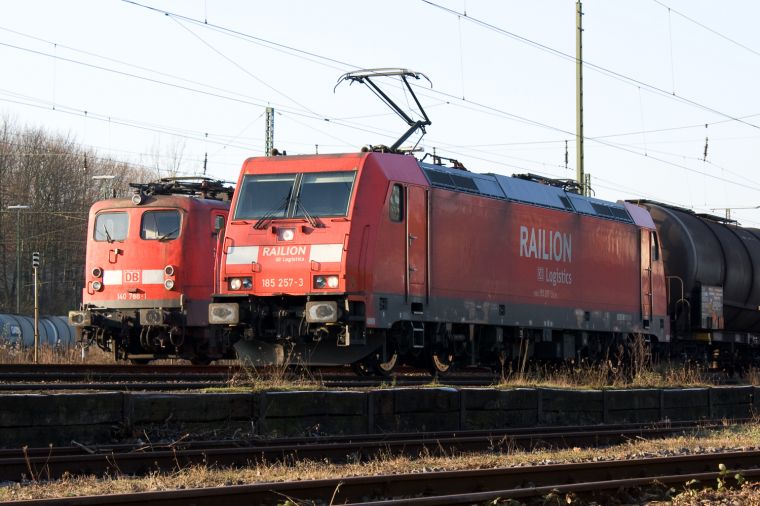Generation Gap
Posted: 18 December 2009
| Taken: | 2009-12-18 21:36:15 |
|---|---|
| Camera: | Canon EOS 1000D |
| Exposure: | 1/3 |
| ISO: | 200 |
| Aperture: | f/8.0 |
| Exposure Time: | 1/125 |
| Focal Length: | 55 mm |

This work is licensed under a Creative Commons Germany license.
Notes
This particular combination (old locomotive vs. new locomotive) in Aachen West looks not too interesting, but what we actually have here are examples of the oldest and the newest class of freight road locomotives in use by DB today.
The class 140, pre-1968 class E 40 was built from 1957 all the way to 1973. 140 768-1 here is one the latter models and was probably delivered as 140 already, but nevertheless, it’s quite an old machine. 185 257-3, on the other hand, was delivered to DB on May 30th, 2006. The Bombardier TRAXX 2 F140 AC2, german class 185.2, is among the most modern machines in DB service, and in fact second only to the 186 (which, despite clear plans in that area, is not yet directly used by the freight division of DB, so I think I can get away with calling the 185.2 the most modern machine). In fact, the 185.2 series is not even fully delivered.
Which is why it can be considered surprising that the number of active 140s is actually increasing, while that of active 185.2s is shrinking. The reasoning is pretty easy, though: Thanks to the world crisis, DB stopped taking delivery of new 185.2s and also declared that all electrics in need of larger maintenance should be put in storage for the time being. Many 140s were already in storage, not because they needed maintenance but rather because they weren’t needed. Now freight traffic is increasing again, and the 140s are the cheapest machines to get running again, so the amount of operative machines has doubled from 40 to 80 in a surprisingly short span. I’m fairly sure the 140 won’t outlast the 185.2, but you never know…

 Deutsche Version
Deutsche Version Entire Gallery
Entire Gallery

 Next Picture
Next Picture
 Previous Picture
Previous Picture
